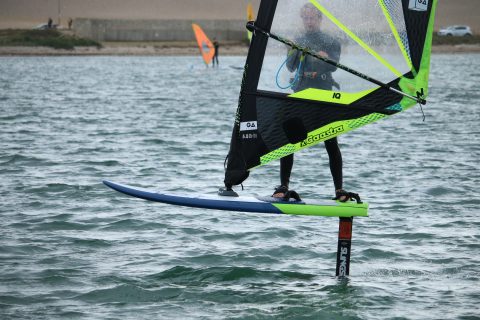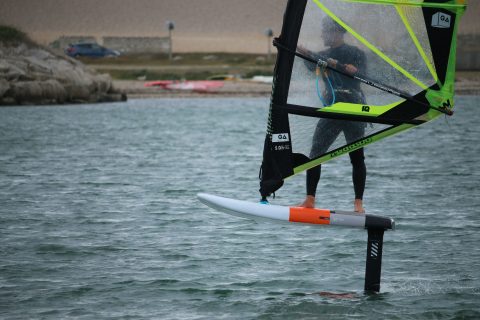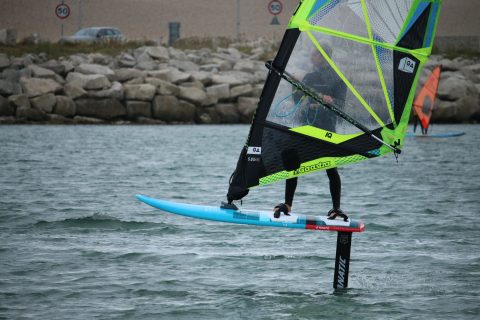Outdoor sports, Extreme sports, Running, Triathlon, Mountain bike, Kitesurf, Windsurf, etc...
viernes, 13 de noviembre de 2020
Devastating Injuries And Qualifying For The Olympics, John John Florence Explains
#Windsurf STARBOARD SUPERCRUISER CARBON REVIEW
STARBOARD SUPERCRUISER CARBON REVIEW
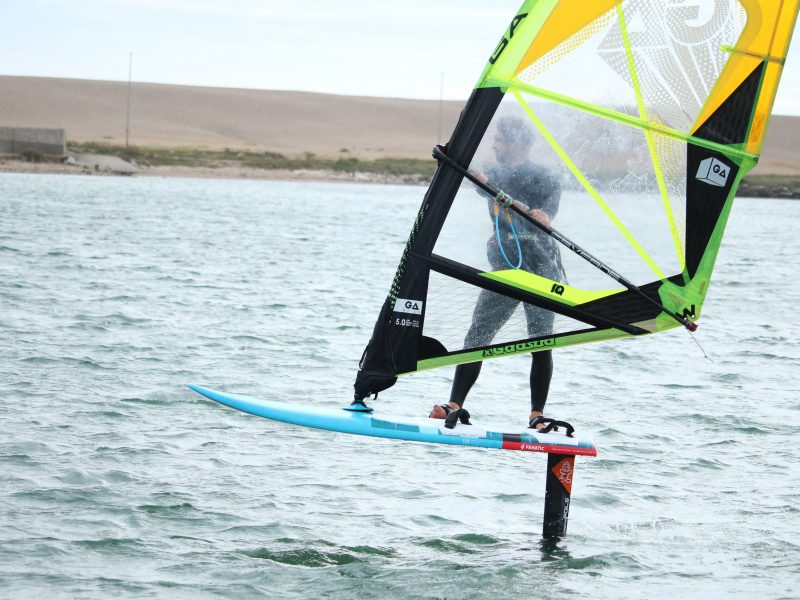
This is the review from our test team of the Starboard Supercruiser carbon foil, which was featured in our August 2020 edition of Windsurf Magazine.
STARBOARD SUPERCRUISER CARBON
WEBSITE: http://starboardfoils.com
PRICE: £1799.00
THEY SAY
“A new style of foiling: manoeuvrable, smooth and super fun. Our easiest foil ever. The 1700 cm2 front wing gives the sensation of floating on air and gives the lowest take-off speed.”
WE SAY
The Super Cruiser was a welcome addition to the Starboard lineup in 2019, filling the void in their range for low aspect ease and manoeuvrability. The front wing was lifted directly from the brand’s Wave foil programme, with its large surface area, thin profile (for speed and acceleration) and shallow double concave underside, for directional stability and carving control. With an extended fuselage and enlarged tail wing, the SuperCruiser built upon the foundations of the front wing’s performance, maintaining its manners and predictability when loaded with sail power and travelling at speed. So it’s not surprising that the SuperCruiser remains unchanged for 2020, giving us the opportunity to test the more alluring carbon version here. In essence it is exactly the same foil as we tested last year, yet with a hefty £850.00 extra added to the price tag to account for the only material change – the carbon mast. So was there enough change in performance to justify the inflation?
Assembly is easy and well thought out, the SuperCruiser seeing a departure from the brand’s established windfoil modular system so that the ‘sleeve’ fuselage can house the front wing. There is also a rocker system on the tail-wing/fuselage connection, enabling the pitch of the stabiliser wing to be varied according to preference, more on this later.
Having not used the SuperCruiser in a while, we’d forgotten just how much of a workhorse it is. The whole wing seems to generate lift, rising up uniformly and suffering from little lateral wobble or imbalance. Progressive and forgiving, its acceleration is creamy smooth, doing little to unsettle even the most nervous passenger. Simply stand up over the board and let the foil do the work … or put the energy in and the SuperCruiser shows plenty of willingness to respond. It breathes confidence into the foiling newcomer and oozes the essence of freeride foiling, being both eminently accessible and enjoyable. Fitting the SuperCruiser into various boards and setups, the ability to alter the angle of the tail wing and therefore the longitudinal pitch of the board is a real bonus, tweaking and fine-tuning the setup so that it is easy to establish the right balance. Cruising at a respectable speed it is directionally very stable and predictable, providing plenty of reaching comfort for covering distances effortlessly. Experienced race-oriented foilers may well crave a looser, more slippery feel, but for the recreational foiler looking for the partner to back them whatever the conditions, the SuperCruiser is right up there. In manoeuvre and transition its response is measured and flowing, rather than sharp or crisp. Drive hard and it will respond more immediately, yet it seems to prefer a more fluid and rhythmic path instead of being thrown into tight corners. And so to the question on everyone’s lips: “Is the carbon mast worth the extra investment?” The simple answer is that it’s nice to have the option! Stiffness is crucial in foiling and Starboard’s mast technology has proven time and again that it’s up to the task. If you can afford it, then why not? There wasn’t the slightest hint of twitch or devilment in the SuperCruiser’s flight. But, if not, the Aluminium SuperCruiser at £949.00 is quite exceptional value for an incredibly user-friendly and fulfilling foil.
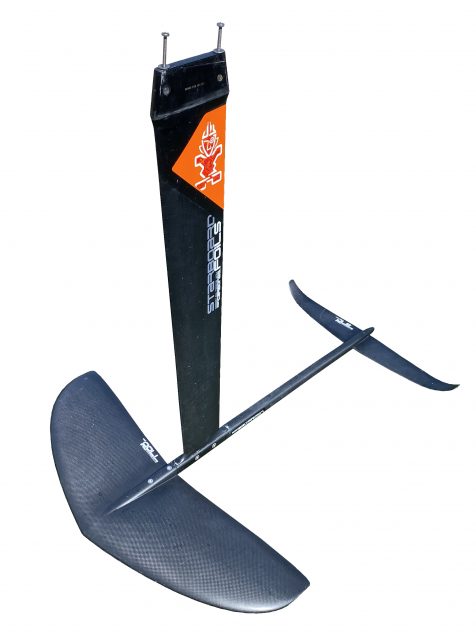
VITAL STATS
FOIL
Head: Deep Tuttle
Mast Length: 85.0 cm
Mast Material: Carbon
Fuselage Length: 87.0 cm
Fuselage Material: Aluminium
Front Wing Span: 80 cm
Front Wing Chord: 25 cm
Front Wing Area (Quoted): 1700 cm²
Tail Wing Span: 59 cm
Wing Material: Carbon
Weight: 4.95 kg
OTHER FOILS IN THIS TEST:
MAUI ULTRA FINS WINDFOIL 4:ALL
SLINGSHOT HOVER GLIDE FWIND V3 / INFINITY 84
The post STARBOARD SUPERCRUISER CARBON REVIEW appeared first on Windsurf Magazine.
Windsurf Magazine https://ift.tt/2Ul04x1jueves, 12 de noviembre de 2020
Medina Vs Italo, Who Would Win At Lowers? The Lineup Time Machine
The Road to The WSL Finals Starts at Maui and Pipe
#Windsurf DUOTONE: SUSTAINABILITY 2021
DUOTONE: SUSTAINABILITY 2021
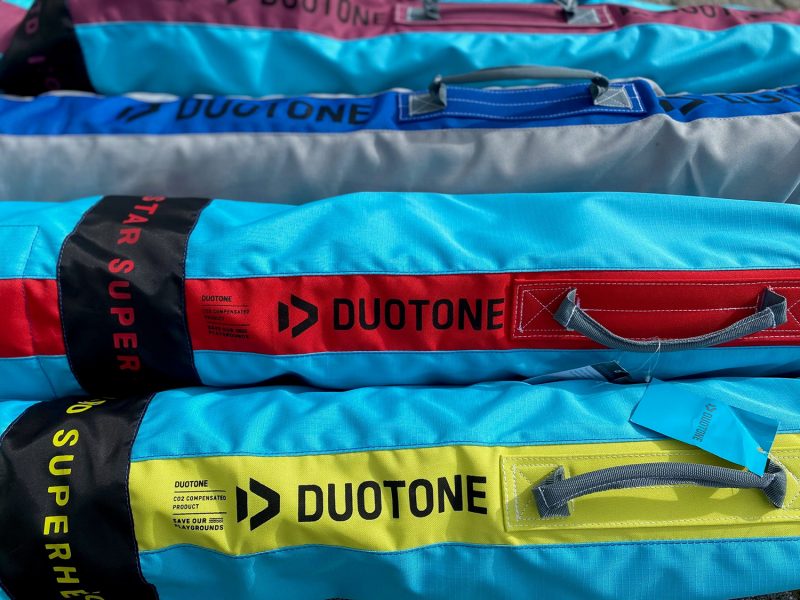
Duotone has partnered with Waste2Wear to make all sail bags out of 100% recycled PET nylon. The base for this material are “fished” plastic bottles from Chinese fishermen.
An average size sail bag is made from 35 bottles.
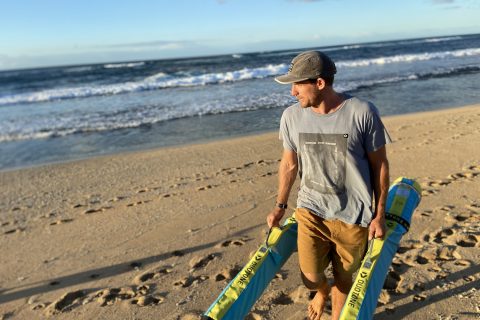
“Our business is creating windsurfing products. It is what we love and we know how to do it well. We have spent nearly four decades developing, designing and refining cutting-edge products by which we have influenced windsurfing more than any other sail manufacturer. Unfortunately, by creating the products we love, we are harming the very environment we need to practice our sport. Windsurfing rigs and the processes necessary to create them are not environmentally friendly. At least as of today there are no eco-friendly substitutes existing offering the minimum requirements necessary to design modern Windsurfing sails. But especially as windsurfers, we feel connected to our oceans, lakes, and rivers and we see first-hand the damage we are doing to our planet. We depend on our natural environment and, in turn, we believe it is our responsibility to protect it.
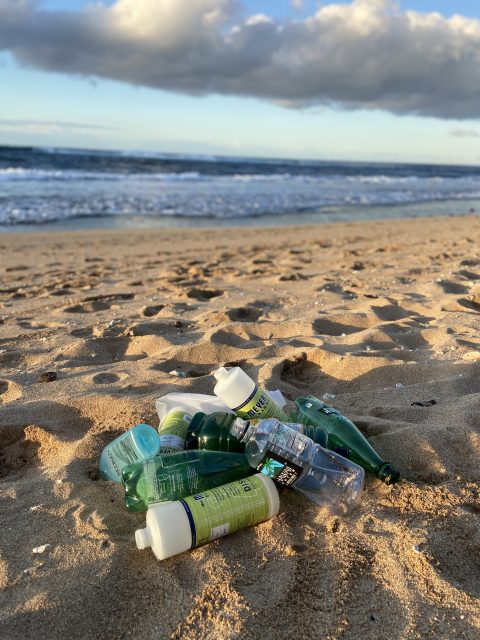
The most direct way out of this dilemma: MAKING LONGER LASTING PRODUCTS
A high-performance product that lasts longer and best case can even be put into additional use on the secondhand market is the best and only way to conserve the resources of our earth. Durability and longevity were and will ALWAYS be on top of our priority list. Our industry leading warranty extensions bear witness to this philosophy.
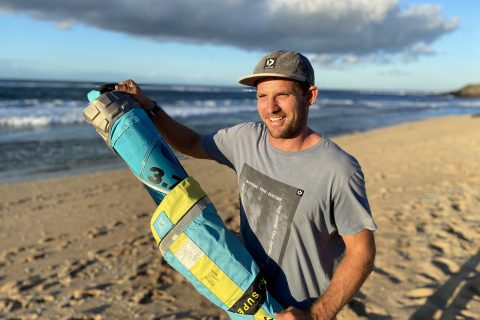
Since sustainability is the most important and pressing challenge of today’s mankind to secure a livable mother earth for future generations to come, we cannot simply stop here.
We feel it is our responsibility to take action and do what we can to save our playgrounds before it is too late. And we invite everyone to join us in this endeavour.”
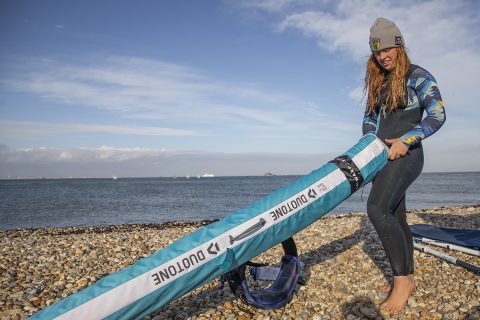
The post DUOTONE: SUSTAINABILITY 2021 appeared first on Windsurf Magazine.
Windsurf Magazine https://ift.tt/3nigoeb#Windsurf SLINGSHOT HOVERGLIDE FWIND V3 (INFINITY 84) REVIEW
SLINGSHOT HOVERGLIDE FWIND V3 (INFINITY 84) REVIEW
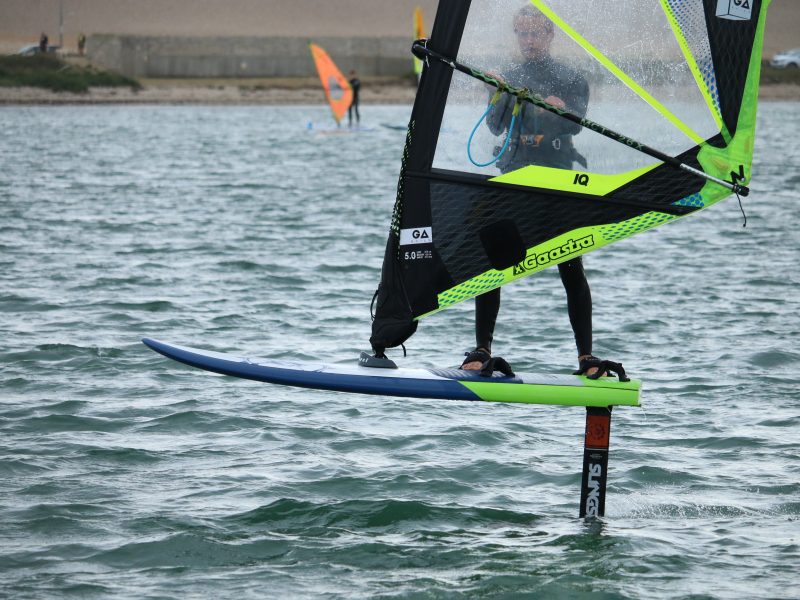
This is the review from our test team of the Slingshot Hoverglide Fwind V3 (infinity 84) foil, which was featured in our August 2020 edition of Windsurf Magazine.
SLINGSHOT HOVERGLIDE FWIND V3 (INFINITY 84)
WEBSITE: http://www.slingshotsports.com
PRICE: FWIND FOIL COMPLETE (WITH 76 WING): £1190.00 INFINITY 84 WING ONLY: £550.00
THEY SAY
You’re a windsurfer that wants the ultimate go-slow pump foil wing. This wing is for the wind foiler that wants to be able to do carving tricks, foil out with ease and ride the tiniest bumps while luffing the sail.
WE SAY
Last year we tested the third version of the Hover Glide FWind, complete with 90 cm mast as standard, and were suitably impressed with its performance, stating it had “such a playful character … making an average session that much more enjoyable.” So it comes as no surprise that the V3 has remained current for 2020, and rather than going over a well-trodden path, we thought it an opportunity to try one of Slingshot’s many other front wings in this test. There are a total of eight compatible front wing options in the Hover Glide range, from the monster Infinity 99 (with its colossal surface area of 2371cm²), to the original wing that formed the basis of the Hover Glide modular system – Time Code 57 cm, with just 707 cm² of area. The 84 is the next wing up in the range from the standard 76, so it would be interesting to see the benefits it brought to the standard package. Slingshot UK describe the 84 as, “Designed for teaching windsurf foiling in light winds and for heavier, less proficient pilots, as well as a good all-rounder for SUP and Wing foiling.”
As with everything in the Slingshot range, the foil’s components are well engineered to cope with the corrosive environment we play in. The FWind package comes complete with both pedestal plate and medium Tuttle head as standard, but take heed that the Slingshot’s Tuttle uses 8 mm fin bolts. So if you’re using the FWind with any board brand other than a Slingshot, you also need to invest in some bolt adaptor threads (£8.00), so that standard 6 mm bolts can be used. The foil is put together without any issue, the ‘Switch Fuse long’ fuselage housing the larger wing precisely. We tried this new amplified setup in various boards and conditions, and have to say the amount of lift the Infinity 84 provides is just incredible. You can be super aggressive with it and punch the board out of the water, or stand still and let the foil do all the work. Either way, it almost defies gravity and physics, the way it generates lift with near negligible forward momentum. If you start with the standard 76 and switch in the 84, the lift does seem to come from further back, so we found ourselves experimenting with the geometry of the setup – very easy when using the practical pedestal plate fixing, but a little more time consuming adjusting straps and base plate position it you’re using the Tuttle box option.
Lifting early, with steadfast stability and security underfoot, the Infinity 84 epitomises the ‘Hover Glide’ name, bestowing the pilot with the perfect tempered platform with which to learn how to sustain flight and corner confidently on. Throw it around and the foil retains flight, even at the slowest speeds, giving the manoeuvre-oriented rider the incentive to push their airborne repertoire, or ride nearby swell lines.
As the wind and speed increases, the Infinity 84 almost generates too much lift, the rider quickly realising they have too much sail area and power available in their hands. It also has a definite terminal velocity, peaking at a comfortable speed and making it very clear it has no intention of accelerating further. As such, the extra sail energy quickly turns to handling issues, extending to an inconsistent ride height as the rider tries to control the power. Change down sail size and the same is soon experienced as the foil maxes out. The best option we found is to resort back to the 76 Infinity, an easy process with the removal of just three bolts. So does the 84 have limited appeal? For windfoiling perhaps. It has served the purpose of demonstrating just how good and ‘fit for task’ the 76 is! But more than this, the 84 undoubtedly has its place, particularly with those interested in a multi-sport foil. We had the opportunity to use the 84 for wing foiling, for example, and it was a class act. The ability to lift early was well received and as the wing-foil board tends to cruise at slower speeds (initially at least!), the 84’s velocity ceiling never became an issue.
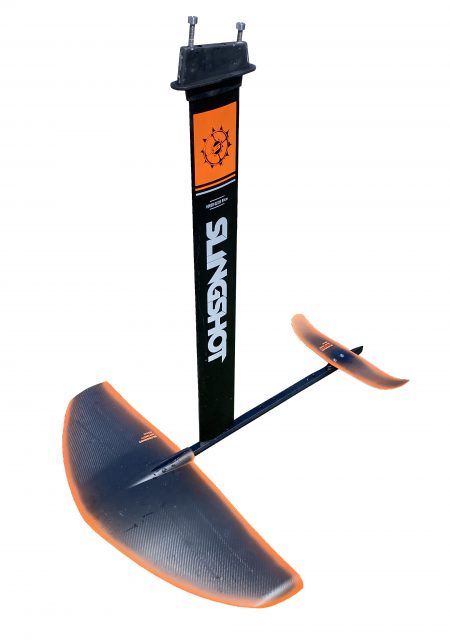
VITAL STATS
FOIL
Head: Deep Tuttle
Mast Length: 90 cm
Mast Material: Aluminium
Fuselage Length: 100 cm (including front wing)
Fuselage Material: Aluminium
Front Wing Span: 83.8 cm
Front Wing Chord: 30.4 cm
Font Wing Area (Quoted): 2066 cm²
Tail Wing Span: 41.7 cm
Tail Wing Area: 314 cm²
Wing Material: Carbon composite
Weight: 6.35 kg
THE LINE UP:
MAUI ULTRA FINS WINDFOIL 4:ALL
The post SLINGSHOT HOVERGLIDE FWIND V3 (INFINITY 84) REVIEW appeared first on Windsurf Magazine.
Windsurf Magazine https://ift.tt/2Il2t8Emiércoles, 11 de noviembre de 2020
#Windsurf REDEMPTION DAY! TIMO MULLEN KIMMERIDGE BAY
REDEMPTION DAY! TIMO MULLEN KIMMERIDGE BAY
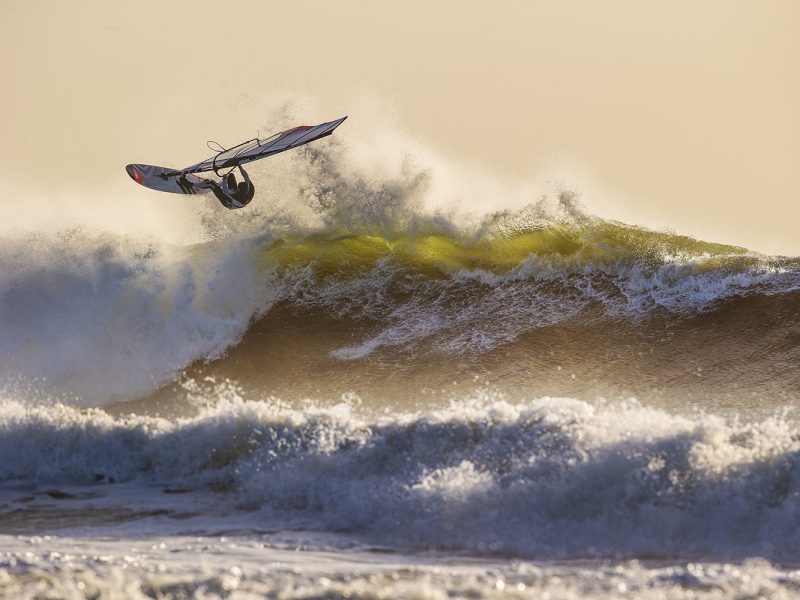
REDEMPTION DAY!
KIMMERIDGE
Words Timo Mullen
Photos: John Carter
From our August Issue of Windsurf Magazine we hear all about Kimmeridge Bay from one of the local experts: Timo Mullen!
Renowned for its windsurfing and variety of spots to sail at, Kimmeridge Bay is a wave sailing jewel on the south coast of England. Timo Mullen gives a guide to its shores while reflecting on why a recent session there was a reminder that there is no place like home!
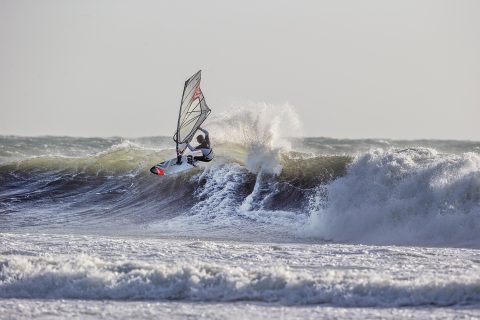
‘K-BAY’
When I decided to move to Poole in Dorset, the range of quality windsurfing locations nearby was a major drawcard. One of the best in Dorset, if not the whole south coast of England, is Kimmeridge Bay, or ‘K-Bay’, as it is often known. It has a couple of really world-class breaks. The main part of Kimmeridge is the actual bay, which is kind of known as a more intermediate sailing spot. I actually sail the bay 90 percent of the time when I sail at K-Bay. The jumping is insane and also the wave riding on the west side of the bay can be really fun. The wave can be pretty hollow and I have had some of my best hits and wave rides actually just in the bay.
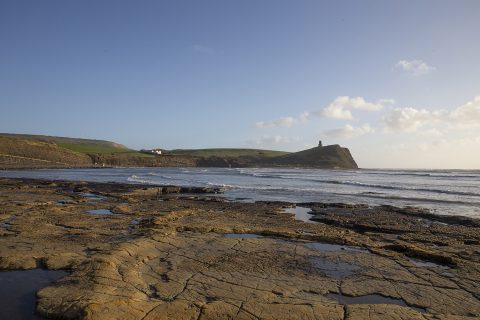
The ‘Ledges’ are a series of rocky ledges east of the bay; they are a more ‘bowly’ wave and get a lot bigger than the bay. We generally sail the ‘Ledges’ when the wind is from the west, which is dead side-shore and it can be quite a challenging wave to sail. A lot of guys have broken equipment out there and I would say the ‘Ledges’ is more for experienced sailors only, stick to the bay if you have just bought some nice new gear and you want it to remain shiny!
The jewel in the crown of Kimmeridge, and definitely only for expert wave sailors, is ‘Broad Bench’. Lying on the western side of the bay is a world class right hand point break. It is extremely heavy and one mistake on the ‘Bench’ and you have a high chance of breaking a mast and a long walk back to the car park. The walk back is about thirty minutes across the rocks with broken equipment and it is not a pleasurable experience. The wave breaks off a slate sea bed and dumps fast and heavy onto the reef. But, if you score a good one, the wave riding can be as rewarding as anywhere in the world.
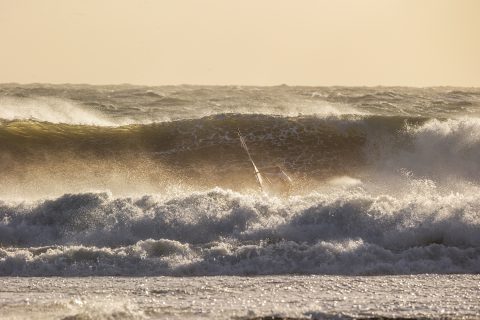
TOO MUCH TO HANDLE
Last December we scored a pretty classic Kimmeridge day. We had strong west to northwest winds, a decent sized southwest swell and sunshine. The conditions that day were logo to mast high and pumping. A few weeks previous to this session I chose to travel to Île aux Vaches in Brittany, France, which is a similar wave to Broad Bench and works on the same forecast but needs a much bigger swell. I actually missed one of the best days at my home break by going to Brittany. In hindsight, heading to France was a bad idea, I bit off more than I could chew in terms of what my body could handle. I realize that I am perceived to be the guy that is always travelling long distances and driving crazy massive miles to score the best sessions, but that trip was one step too far. I left my house at 6 p.m. in the evening and drove non–stop for 14 hours with just 45 minutes sleep. We arrived at the break the following morning to immediately jump into a new spot that was breaking up to double mast high. It was also really heavy; I felt my windsurfing level was terrible that day. Maybe the worst I had windsurfed all year, even though it was some of the best conditions I have ever seen. It was a lesson learned, my body has its limits. Getting no sleep and then straight into performing in double mast high waves and the cold is not possible for me. I also missed a great day at home to rub salt into the wounds.
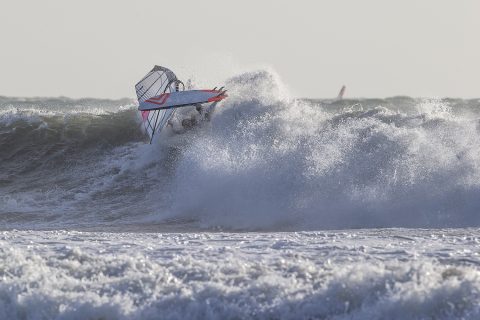
MILITARY DISCIPLINE
It is not only the conditions that are a little bit elusive at Kimmeridge. ‘Broad Bench’ actually sits inside a military firing range. The difficulties with that are that the military are nearly always firing during the week. Which consequently means ‘Broad Bench’ is largely out of bounds for windsurfing, surfing and even walking. If the conditions are good and you want to windsurf ‘Broad Bench’ you have to obey the rules and choose one of the other breaks if the military are firing. The ‘Ledges’ in a northwest wind and a decent swell can be just as much fun to sail as ‘Broad Bench’. Yes, the ‘Bench’ is the massive point break, but actually for most riders the ‘Ledges’ will still offer amazing windsurfing.
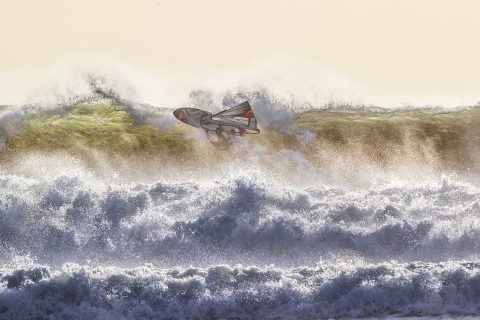
WHEN IN DOUBT, DON’T GO OUT!
The military and the surfing community have worked very closely together to help manage the situation at ‘Broad Bench’ and there is a very clear flag system that operates at K-Bay. Basically, if the red flags are flying on the western shore of the bay then ‘Broad Bench’ is out of bounds. There is also a red flag that flies above the range warden’s hut in the lower car park, which signals if the ‘Bench’ is a no-go zone! If you are in any doubt, always go to the range warden’s hut and ask what the status is, they are more than happy to help. Whatever happens, do not disobey the rules! They have a local by-law which means it is an arrestable offence to windsurf or surf when the red flags are flying!
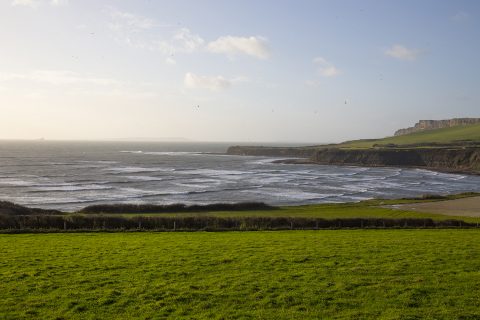
REDEMPTION
So, a few weeks later after my French trip, I had my chance to get my mojo back. It was actually a very special session with only myself, and a couple of the local crew, Mike and Neil. As per normal at Kimmeridge, you kind of have to be there just as it is getting good. I receive a lot of calls from people asking me will it be on at Kimmeridge? The truth is most days you just never know and a lot of people don’t want to drive away from their local beaches on an iffy forecast. You really have to be lucky to catch Kimmeridge at its best and this day was pretty epic. Logo to mast high waves and I was perfectly powered up on my 4.7m Severne Blade with my Mako 91 board, this day was the perfect opportunity to redeem my spirits after the let down in France.
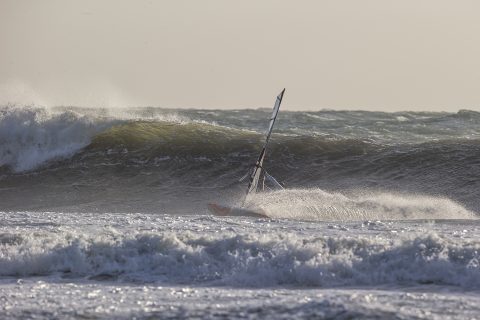
I think that these sort of ‘redemption sessions’ happen to us all, maybe you sailed badly in your last session, broke some gear before you had a chance to shine, or simply turned up too late to hear the most hated saying in any weather related sport, “You should have been here earlier!” This day at Kimmeridge though really was my chance to reset after Brittany. Broad Bench is my safety net, I know every nook and cranny of the reef there; maybe that is how the local boys in France see Île aux Vaches? Maybe I had plateaued as an athlete and my trip to France was the start of my spiral downwards? Well a session at my home break in perfect conditions I guess would be a good litmus test to see what went wrong in France! The anticipation of catching a good wave at ‘Broad Bench’ is massive. When it is on the swell lines are clearly defined, so you have plenty of time to prepare yourself to draw your lines on windsurfing’s ultimate blank canvas. Shall I bust a 360, shall I hit an air off the first section or shall I just enjoy the ride and carve it to pieces? It is redemption day, so I don’t hold back and ride it like I stole it!! Suffice to say the session was one of the best; actually I tend to always say that! Maybe it is not the conditions that dictate a good session, maybe it is your own form and mental attitude? I have had just as good a feeling after a bolt onshore session in the bay, but within that session I maybe landed a sick 360 or stuck some new move. In fact I have had some of my worst sessions, only to land a move in the last 5 minutes to turn things around. My session in France had nothing to do with the conditions, they were what I dream of! My performance was about my lack of physical and mental preparation, a lesson learnt. I needed a good session at home to redeem myself; it was definitely my redemption day!

The post REDEMPTION DAY! TIMO MULLEN KIMMERIDGE BAY appeared first on Windsurf Magazine.
Windsurf Magazine https://ift.tt/38ygZ7p#Windsurf NICO PRIEN TRIES WINDSURF GEAR FROM 2020, 1994 and 1978!
NICO PRIEN TRIES WINDSURF GEAR FROM 2020, 1994 and 1978!
Nico Prien delves back through the ages and tries out gear from 2020, 1994 and way back to 1978!
“In this video I’m trying out some old school windsurfing gear and comparing it to the latest JP Slalom board. What an interesting experience to test the Mistral Energy from 1994 and the original Windsurfer. Obviously, the 2020 JP is a much, much faster board with more control, but I was surprised how well the boards from 1994 already worked. Enjoy!”
Via Nico Prien
The post NICO PRIEN TRIES WINDSURF GEAR FROM 2020, 1994 and 1978! appeared first on Windsurf Magazine.
Windsurf Magazine https://ift.tt/35kHOdh#Windsurf RRD WH UNIVERSAL ALU SET REVIEW
RRD WH UNIVERSAL ALU SET REVIEW
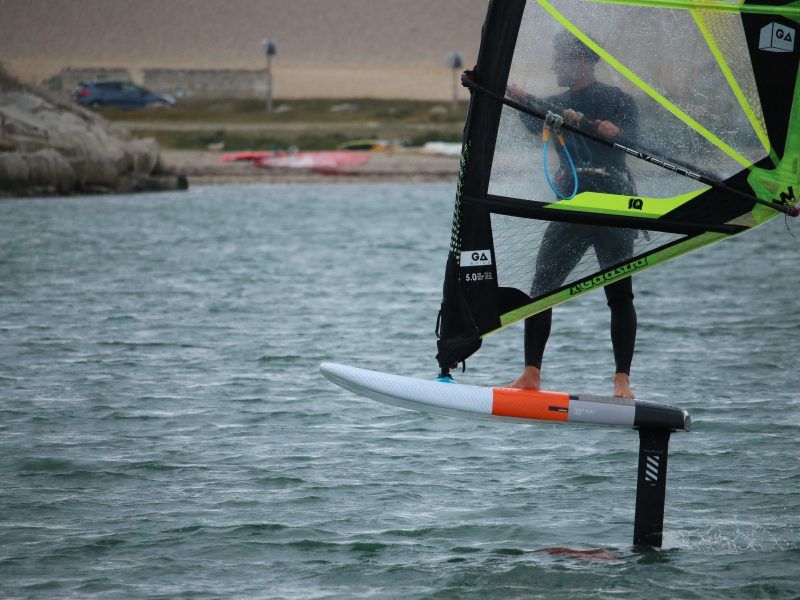
This is the review from our test team of the RRD WH Universal Alu Set, which was featured in our August 2020 edition of Windsurf Magazine.
RRD WH UNIVERSAL ALU SET
WEBSITE www.robertoriccidesigns.com
PRICE: £1189.00
THEY SAY
“Learn how to foil and gybe in 2 days! Spectacular lift starting at 8 knots of board speed on the water. You can go all the way up to 18 knots of top speed with pleasure, comfort and exhilarating fun. Is the most versatile hydrofoil in the range.”
WE SAY
New for the brand’s twenty-fifth season, the Universal is RRD’s answer to the ‘one foil does all’ conundrum. On first sight, it may seem somewhat familiar, with the same wings as the brand’s SH-Flight Alu foil of yesteryear. To make it windfoil compatible though, the Universal now has an 85 cm mast and 100 cm fuselage. It comes complete with a removable Tuttle head adaptor, which sits on top of a pedestal plate track system, so that the foil can be used with most board types. It is a breed of foil that is fast gaining traction; a product that can be used in multiple sports, from wind foiling to wing foiling, SUP and prone-surf foiling to kite-foiling. For the latter three, RRD offers the KSH Universal Alu (75 cm mast and 76 cm fuselage), which can then be complimented with a conversion kit (100 cm fuselage and Tuttle head adaptor) for windfoiling use.
Foil assembly is uncomplicated, the mast made of extruded aluminium and fitted with stainless steel helicoil threads, to ensure maximum longevity and mitigate corrosion. There is also a plastic sheath that fits snuggly round the foot of the mast, creating a barrier between the mast and fuselage when connected. Nevertheless, there are clear messages printed on both the mast and fuselage, reminding and encouraging the owner to “remove screws after use”. It’s a fair point: no matter what measures are put in place, you can’t beat Mother Nature and the fact that salt water is the perfect electrolyte for aluminium and carbon to react.
Fitted into a Pocket Rocket board (initially with straps), the Universal generates an impressive amount of bottom end lift. Pumping both sail and foil, the energy put in breathes life into the foil, which in turn rewards with plenty of positive response. It seems to generate lift without much forward momentum, releasing from the water for a nigh on vertical take off! Stable and balanced on both feet, it gains speed gradually, feeling comfortable and fluid in response, rather than sharp or instantaneous. With plenty of predictability to its flight, the Universal is an excellent tutor for those first flights, and yet it has a fun and playful nature, gliding through lulls effortlessly and asking little of the rider. Its speed is measured and it won’t be forced to any greater speed, reaching its limit and being stubbornly strong-minded not to go faster. To this end, we enjoyed the Universal far more by accepting this fact and adjusting our riding setup to suit. Take the straps off the board, change down sail size and relax into a light-hearted glide over the water. If you’re after a blissful liberating free sail, then the RRD will provide. You don’t even need to use a harness if you don’t want to! When we tried the Pocket Rocket last year, this is the foil that was missing from the equation. It responds wonderfully to foil pumping, the short Pocket Rocket enabling you to rock on the foil and maximise its potential. Full foiling gybes are a cinch, the deck free for easy foot movement whilst the foil generates lift at the slowest speeds. We did use the Universal in other boards and had an equally fulfilling experience. And then there’s the option to use it for various other sports, perhaps the most notable being wing foiling. It does take a little more technique and input than some of the larger (2000 cm2+) front wings currently in use, yet it responds superbly to input and demonstrated a genuinely fun all-round performance, accessible in various guises.
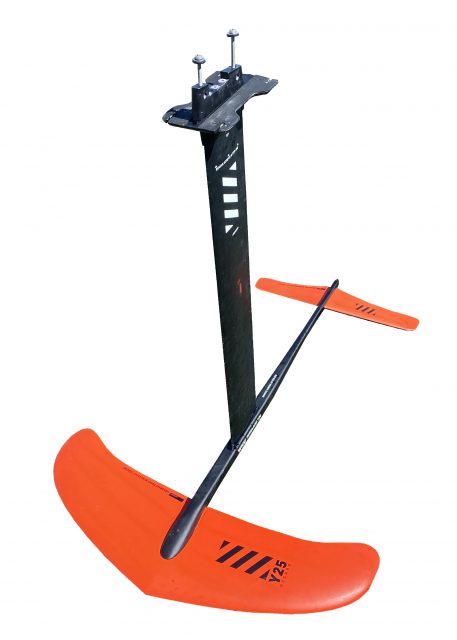
VITAL STATS
FOIL
Head: Pedestal Plate
Mast Length: 85 cm
Mast Material: Aluminium
Fuselage Length: 100.0 cm
Fuselage Material: Aluminium
Front Wing Span: 82.0 cm
Front Wing Chord: 11.8 cm
Front Wing Area (Quoted): 1582 cm2
Tail Wing Span: 52.0 cm
Tail Wing Area (Quoted): 373 cm2
Wing Material: Hybrid carbon composite
Weight: 7.30 kg
OTHER FOILS IN THIS TEST:
MAUI ULTRA FINS WINDFOIL 4:ALL
SLINGSHOT HOVER GLIDE FWIND V3 / INFINITY 84
The post RRD WH UNIVERSAL ALU SET REVIEW appeared first on Windsurf Magazine.
Windsurf Magazine https://ift.tt/35lM8t0martes, 10 de noviembre de 2020
Trestles The World's Most High Performance Wave Is Back On Tour!
SOLO MISSIONS In Little Cottonwood Canyon || Cold House Media Ep. 118
#Windsurf TRAINING WITH GRAHAM EZZY: MARINE HUNTER
TRAINING WITH GRAHAM EZZY: MARINE HUNTER
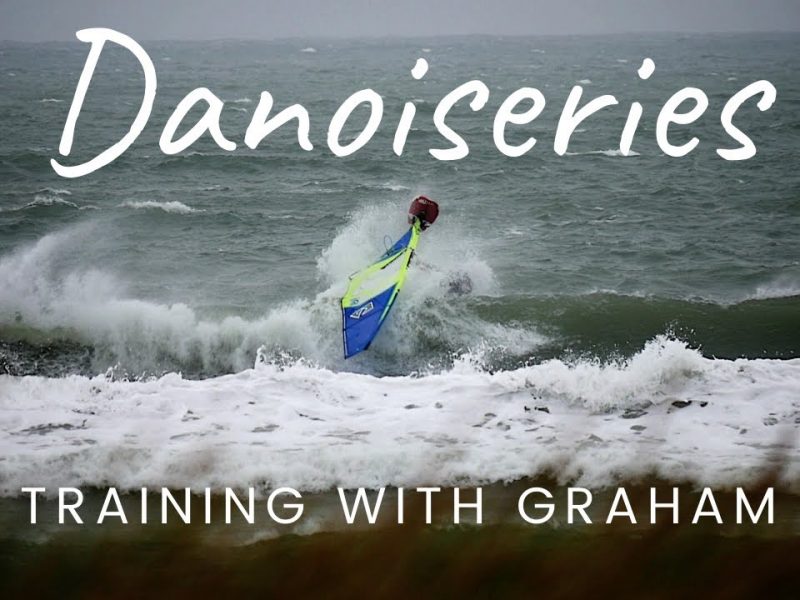
Marine Hunter has put together this action packed clip from her experience at the Graham Ezzy training clinic in Denmark earlier in the year!
“The clinic was great, Graham is an amazing coach who was 100% with us to help us at any time of the day. He showed us how wave riding could be much more accessible and easier! It was my first time in Cold Hawaii and we were really lucky to get wind conditions everyday; it was a great trip to relax after all the Covid anxiety!”
Via Marine Hunter
The post TRAINING WITH GRAHAM EZZY: MARINE HUNTER appeared first on Windsurf Magazine.
Windsurf Magazine https://ift.tt/3nayVZT#Windsurf MAUI ULTRA FINS WINDFOIL 4: ALL REVIEW
MAUI ULTRA FINS WINDFOIL 4: ALL REVIEW
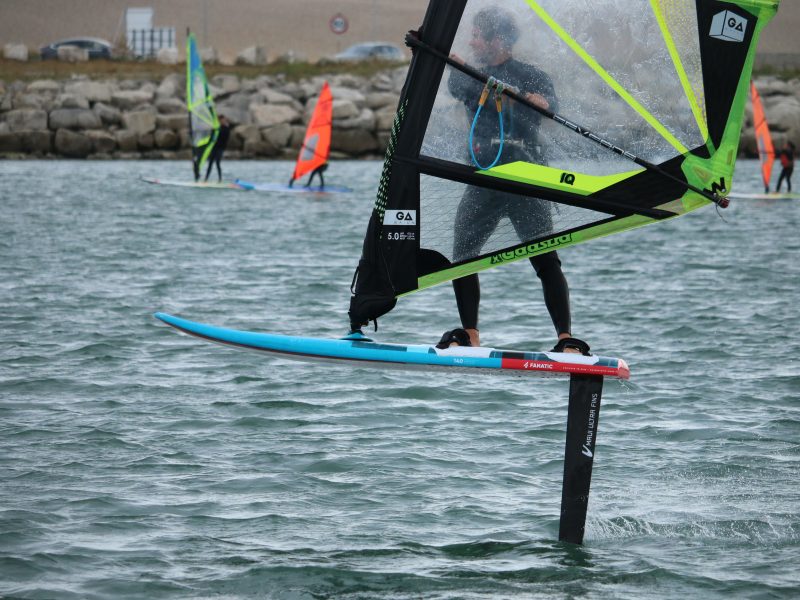
MAUI ULTRA FINS WINDFOIL 4:ALL
Check out our test teams review of the Maui Ultra Fins Windfoil 4: All, which was featured in our August 2020 edition of Windsurf Magazine.
WEBSITE: http://www.mauiultrafins.shop
PRICE: €1753.65
THEY SAY
“The Maui Ultra Fins R&D team led by Rick Hanke (R&D) and Kurosh Kiani (design, testing) have come up with a great beginner to very advanced windsurf foil after three years of development. The MUF WINDFOIL 4:ALL will get you on the foil, carry you through your gybes and let you fly with freeride and race sails alike.”
WE SAY
New for 2020, the Windfoil 4:All is Maui Ultra Fins’ (MUF) first foray into the foiling market, and if you read the brand’s literature, it’s just the tip of the iceberg, with more wings and models to follow shortly. Released in March, just before lockdown, we have now had quite a bit of time testing the 4:All in various setups and conditions, exploring its range and appeal.
Supplied in a padded bag, assembly is very easy and straightforward, the components lining up cleanly, whilst no issue was encountered mounting the Deep Tuttle head into various boards. Produced exclusively in the EU, it is a pretty looking thing, the mast a work of art whilst the material layup and weave in the resin transfer moulded wings is clearly on display. It is clear that plenty of consideration has gone into the layup and production of the component parts, particularly the mast and fuselage. The wing shape, angular fuselage cross-section and overall geometry of the 4:All looks somewhat familiar, and Maui Ultra fins have sensibly adopted a modular system from the off, meaning that all future releases will be compatible with this inaugural product.
Tipping the scales at just over four kgs, it is easily the lightest foil on test here, along with being the highest aspect in design. (We calculated the aspect ratio of the front wing as being 8.0, while the rest in test vary between 3.3 and 4.2.) We anticipated this would translate to a fast and engaging ride on the water, and we were right. But what did surprise us was the 4:All’s usability and practicality, particularly in early lift and transition. Used in marginal conditions with a 145 litre board and 7.8m sail, the foil generates an impressive amount of early lift and acceleration. The power is stable and predictable, making it easy to control, even for the foiling-novice. The reason for this early lift is that despite the front wing being high aspect, the mast is mounted a fair way back down the metre long fuselage, pushing the front wing further forward and providing a greater work rate for its area. The second surprise was that the lift was sustained at varying speeds and pitches, blessing the 4:All with plenty of practicality in flight. If its acceleration becomes a little unnerving, the novice rider can stand over the board, stall it on its tail and temper the ride. And it’s a massive bonus in gybes, making full foiling transitions consistently achievable, providing time and balance for necessary foot movements.
As the wind increases the 4:All can be loaded to explore its race potential. The extra length in the mast was very welcome as we ventured into challenging seas, providing the ability to rise above any danger. Fast on all points of sail, we did experience some noise and whistling from the foil’s wings as speed increased, yet consulting with MUF HQ, we managed to mitigate this with some careful wet-and-dry sanding of the front wing’s trailing edge. Fully powered and pushing, we also experienced some twitch and kick back from the foil, which can be unnerving when committed, or foiling in gusty conditions. We have our suspicions that it’s from torsion in the mast and/or wings, which, whilst their shape and profiles work well, propagate some flex due to their material layup. If produced in stiff carbon, we think the issue would instantly be resolved.
Transferring the 4:All into a smaller board and freeride / wave sail setup, it was a pleasure to use for long periods, comfortably covering distances, whilst feeling engaging and forgiving through the corners. A bold statement for their first foiling product, the 4:All is an accessible freeride/freerace foil, which has the potential to perform at the highest level with some extra refinement … and we are sure it will come.
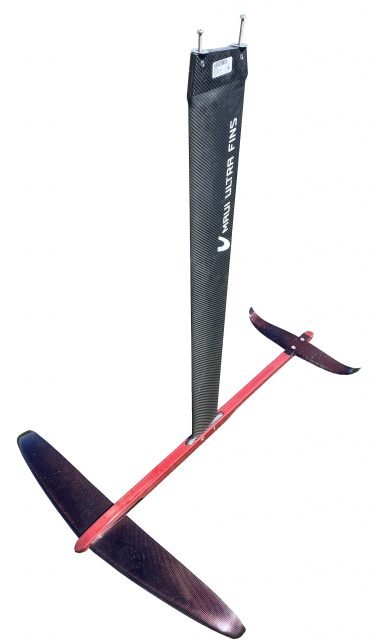
VITAL STATS
FOIL
Head: Deep Tuttle
Mast Length: 95 cm
Mast Material: Carbon
Fuselage Length: 101.4 cm
Fuselage Material: Aluminium
Front Wing Span: 82.0 cm
Front Wing Chord: 11.8 cm
Font Wing Area (Quoted): 840 cm²
Tail Wing Span: 42.0 cm
Wing Material: RTM carbon
Weight: 4.02 kg
OTHER FOILS IN THIS TEST:
SLINGSHOT HOVER GLIDE FWIND V3 / INFINITY 84
The post MAUI ULTRA FINS WINDFOIL 4: ALL REVIEW appeared first on Windsurf Magazine.
Windsurf Magazine https://ift.tt/2IjIvL5lunes, 9 de noviembre de 2020
#Windsurf CAN YOU COMPETE ON A 1990’s OLD SCHOOL BOARD WITH MACIEK RUTKOWSKI
CAN YOU COMPETE ON A 1990's OLD SCHOOL BOARD WITH MACIEK RUTKOWSKI
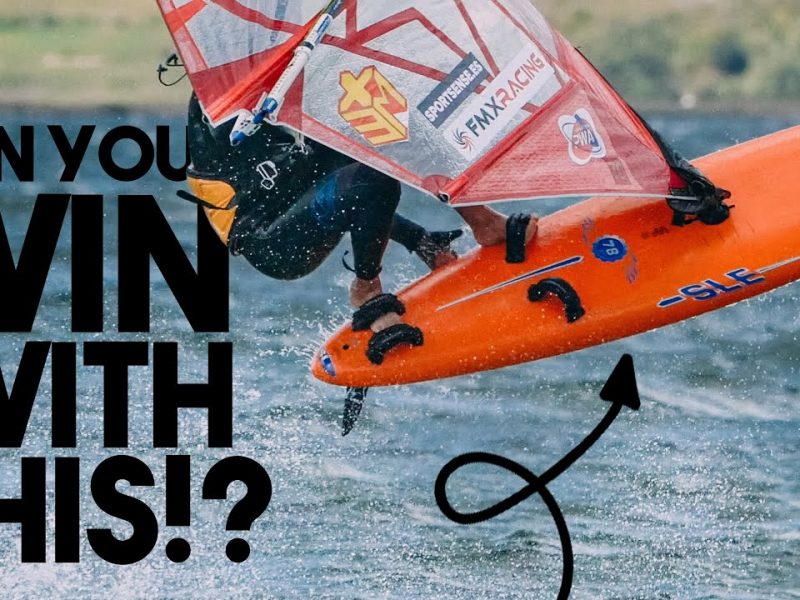
There is a bit of a trend of old school versus new school windsurf equipment happening right now and Maciek Rutkowski continues the theme by putting an old 1990’s Mistral Race Board through its paces on the race course in Poland!
Via Maciek Rutkowski
The post CAN YOU COMPETE ON A 1990’s OLD SCHOOL BOARD WITH MACIEK RUTKOWSKI appeared first on Windsurf Magazine.
Windsurf Magazine https://ift.tt/3eHaalh#Windsurf GA SAILS HYBRID FOIL REVIEW
GA SAILS HYBRID FOIL REVIEW
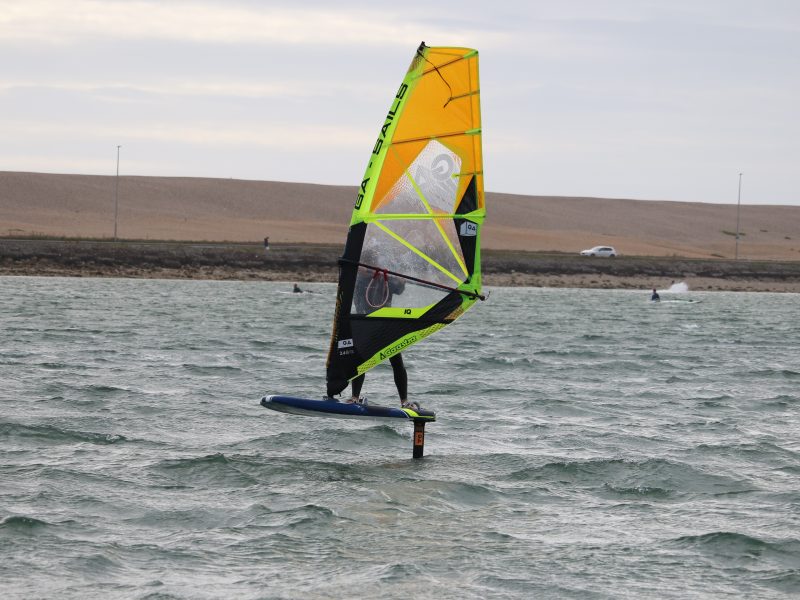
Check out our test teams review of the GA Sails Hybrid Foil, which was featured in our August 2020 edition of Windsurf Magazine.
GA SAILS HYBRID FOIL
WEBSITE: https://ga-windsurfing.com/
PRICE: £879.00
THEY SAY
“The Windsurf Foil Hybrid brings all windsurfers into the air, creating an easy transition between windsurfing and windfoiling, but also offering lots of speed and performance in all conditions.”
WE SAY
Emblazoned with the strapline “Freeride: One for All” the Hybrid from GA Sails arrived on the market late last summer, just too late for our 2019 foil test. Yet, having received some for the OTC centre, our test team have used it extensively ever since, and are now very familiar with it. The name ‘Hybrid’ is actually very apt for it, fulfilling a sort of halfway house between high and low aspect convention. It has a short relatively narrow aluminium mast, which slots into the tapered fuselage. The carbon moulded wings then screw into place, without the inclusion of any shims for any tinkering or fine-tuning. Supplied in a material bag, it is as straightforward as plug-and-play foiling gets.
Fitting the GA into a board, the holes in the top of the Tuttle head are elongated, making it easy to adjust the angle of the bolts and locate the nuts housed in the head. It’s a simple but really useful feature, made all the more apparent when using the Hybrid in different boards. The flange or skirt of the head should fit snug to the bottom of the board, yet being exposed metal can leave its mark on the board. Nothing to raise eyebrows about, but if you’re precious about kit, it may be worth investing in a rubber pad to sit between the board and skirt.
Used in light to marginal winds, it is surprising just how much lift the Hybrid generates. It does require a little more speed and water flow over its front wing than some of the larger front wings in the group, or the intervention of good foil-pumping from the rider, but as soon as it gets the idea, the lift is linear and easy to control. It gathers speed quickly and has a loose lively feel, cutting through the water efficiently. We’ve tried it in a number of boards, from dedicated 145 litre racing machines, to 105 litre compact designs, and it gets on with them all. Fast on all points of sail, the performance range of the Hybrid is its real advantage, capable of showing up full carbon outfits that cost twice as much. There is no tuning available in the Hybrid’s setup, so any tuning required has to be achieved through the board’s configuration, but in a way, the simplicity of the GA is another of its real attractions. You can tinker with footstrap and deckplate positions easily as the flight on the Hybrid is just so balanced and comfortable, giving the rider the confidence to explore its potential further. In transition the Hybrid enters at speed and feels laterally secure and stable, holding its carve and responding smoothly to any change in foot pressure. If speed is lost through the turn, the foil continues to generate lift well, providing plenty of margin for clumsy footwork and error.
At 80 cm, the Hybrid does have the shortest mast in this group; something that we would tend to pick up on as a windfoiling weakness at first glance. On the water however, it didn’t really manifest itself as the Achilles heel that we thought it might. Yes, when loading with large sails, sailing in gusty winds or turbulent seas, there was a tendency to breach on occasion, but not any way near as often as we initially envisaged. The Hybrid’s ease and innate speed kept it captivating and really encouraged the rider to foil more often and with more confidence. A windfoil specific all-rounder with real appeal, at this price it represents exceptional value. GA was late to the party, but if this is a taste of things to come from this brand, we are excited!
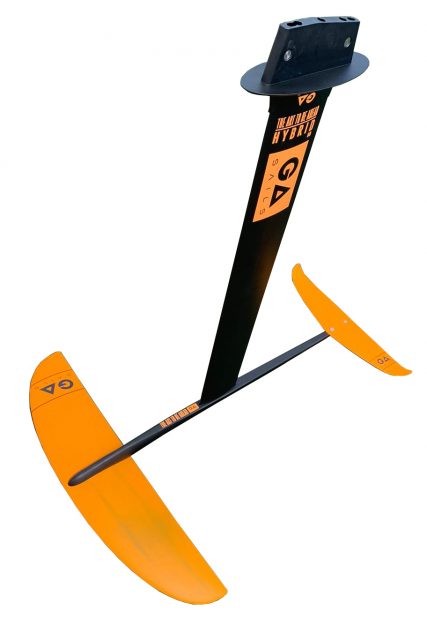
VITAL STATS
FOIL
Head: Deep Tuttle
Mast Length: 80 cm
Mast Material: Aluminium
Fuselage Length: 84.6 cm
Fuselage Material: Aluminium
Front Wing Span: 71.3 cm
Front Wing Chord: N/A
Front Wing Area (Quoted): 936 cm2
Tail Wing Span: 44.2 cm
Wing Material: Carbon
Weight: N/A
OTHER FOILS IN THIS TEST:
MAUI ULTRA FINS WINDFOIL 4:ALL
SLINGSHOT HOVER GLIDE FWIND V3 / INFINITY 84
Return to test overview page..
The post GA SAILS HYBRID FOIL REVIEW appeared first on Windsurf Magazine.
Windsurf Magazine https://ift.tt/3eHuLpf